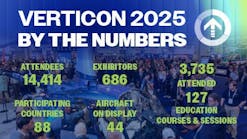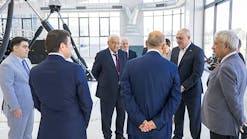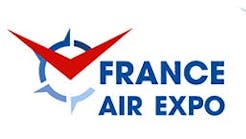While the COVID-19 pandemic has created challenges for the general and business aviation industry, it has also created opportunities for improvement. Given travel restrictions and social distancing recommendations, the need for the use of remote and virtual assist technologies is ever more prevalent.
The General Aviation Manufacturers Association (GAMA) has been pushing for the FAA to use these technologies to improve efficiencies of certain inspections and tests throughout the industry. These technologies create opportunities to enhance safety oversight and improve overall processes as they offer new perspectives during the examinations.
During the outset of the pandemic, the FAA published the long-awaited guidance regarding the use of remote and virtual assistance technologies to support certain tests, inspections and oversight activities. The FAA’s Aircraft Certification Service (AIR) and the Aircraft Flight Standards Service (AFS) each published separate guidance documents to facilitate use and support of remote technologies. Even though they were both published as COVID-19 mitigation measures, they have been in development for quite some time and are guidance and policy documents that are in place on a permanent basis.
The FAA AIR Policy Statement entitled “Use of Remote Technology During the Performance of Inspections and Tests” provides information on the use of remote technology to perform prototype conformity inspections, engineering and ground tests, engineering compliance inspections, production conformity inspections and inspections for the issuance of an Authorized Release Certificate, FAA Form 8130-3, Airworthiness Approval Tag.
For clarification, the FAA also published a frequently asked questions (FAQ) document detailing the scope of applicability and limitations where remote technology has proven to be challenging and often unacceptable to the FAA. Of note, most tests and inspections must be done in real-time, not previously recorded and remote technologies are not to be used when a pilot/crewmember is part of the evaluation. The entire FAQ document can be found on the FAA’s website under the section titled “Information for Applicants and Design Approval Holders.”
In mid-April, the FAA AFS published an internal memo for all Flight Standards Service employees clarifying that the use of Video and Communication Technology (VCT) is permitted and highlights the benefits of its voluntary use as cost effective, timely and an efficient means to support internal and external users. The memo specifically states that, “current FS Orders and Federal Aviation Administration (FAA) regulations do not prohibit FS or industry use of VCT in fulfilling the requirements and no specific guidance is necessary to enable its use.”
These policies are a welcomed opportunity for both the FAA and industry. The use of remote technologies can be a safe and cost-effective option, which helps improve certification or inspection timeliness and reduce FAA and industry resource burdens. Even still, as with any new policies, industry has been reporting some challenges with its implementation — largely due to lack of familiarization with the policy from both an industry and FAA perspective.
GAMA has been working with its membership and the FAA to provide feedback and examples of industry practices in support of any future clarifying guidance to facilitate practical application and use of remote technologies. This feedback largely serves as a foundation for discussions between the FAA and applicants/organizations to foster a common understanding. By identifying the capabilities and limitations of these technologies, we can make the needed adjustments to better serve all sides. Ultimately, it is the applicant's or certificate-holder's responsibility to comply with the relevant regulations when using remote technologies.
It is encouraging that in the wake of this pandemic, we can adopt changes that will help the industry in both the short- and long-term. We applaud the FAA for making these changes.
As we work to overcome the additional challenges brought on by the pandemic, it is imperative that we draw on the resilience of our industry and the talent and strength of our industry’s phenomenal workforce to pave the way for recovery.
Pete Bunce is the President and CEO of GAMA, an international trade association representing more than 100 of the world’s leading manufacturers of general aviation airplanes and rotorcraft, engines, avionics, components and related services.






